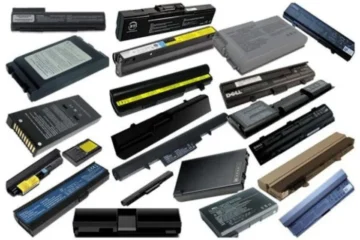What are the 4 basic types of electronic components?

4 basic types of electronic components
Electronic Component Manufactueres offer four basic types of electronic components—resistors, capacitors, inductors, and diodes. Understanding these four basic electronic components will unlock a multitude of possibilities for your electronic projects.
In this article, we will guide you through the intricacies of these essential components, providing insights into their working principles, applications, specifications, and factors to consider during component selection.
Resistors
Resistors play a crucial role in electronic circuits. As you explore the world of resistors, you’ll discover their fundamental importance and wide-ranging applications. In terms of variety, resistors come in various types, each with unique characteristics suited for specific purposes.
For example, carbon film resistors, accounting for approximately 30% of the global resistor market, offer precision and stability in various applications. On the other hand, metal film resistors, with their high accuracy and low noise, are favored in sensitive electronic devices.
The working principle of resistors lies in their ability to impede the flow of electric current. Introducing resistance controls the amount of current passing through a circuit, allowing for precise voltage regulation and current limiting.
This principle finds applications in various fields, from simple tasks like current limiting in LED circuits to complex applications such as precision measurement instruments and power electronics.
When selecting resistors, several factors come into play. Key specifications and parameters include resistance value, power rating, tolerance, and temperature coefficient. For instance, precision resistors offer tolerances as low as 0.01%, ensuring accurate performance in critical applications. Additionally, factors like size, cost, and availability should be considered based on the specific requirements of your project.
Electric scooters embrace cutting-edge electronics, propelling riders into a thrilling future of seamless mobility.
According to market research, the global resistor market was valued at approximately $9.2 billion in 2020 and is expected to reach $12.5 billion by 2026, with a compound annual growth rate (CAGR) of 5.1% during the forecast period. This growth can be attributed to the increasing demand for electronic devices across various industries.
Capacitors
Capacitors are a thriving market, with a projected value of $20 billion by 2026, driven by the growing demand for electronic devices, renewable energy systems, and electric vehicles.
Capacitors come in various types, each designed for specific purposes. Electrolytic capacitors, for instance, offer high capacitance values and are commonly used in power supply circuits. Ceramic capacitors, known for their small size and stability, find applications in high-frequency circuits. Familiarizing yourself with the different types will enable you to select the right capacitor for your needs.
At the heart of a capacitor lies its working principle: the storage of electrical charge between two conductive plates separated by a dielectric material. This characteristic allows capacitors to store energy and release it when needed, making them invaluable in energy storage, filtering, and timing circuits.
Capacitors find extensive use in a wide range of applications. From smoothing out power supply voltages in electronic devices to filtering noise in audio systems, their contributions are indispensable. Capacitors also play a crucial role in energy storage systems, renewable energy technologies, and electronic components like sensors and actuators.
When selecting capacitors, certain specifications and parameters should be considered. These include capacitance value, voltage rating, tolerance, and temperature coefficient. Furthermore, factors like size, cost, and reliability must be considered, depending on your project’s requirements.
Inductors
Inductors offer a variety of types, each tailored to meet specific needs. From widely-used wire-wound inductors to compact surface mount options, understanding these variations empowers you to choose the most appropriate inductor for your circuit.
The working principle of inductors centers around creating magnetic fields when an electric current flows through them. This unique characteristic enables inductors to store energy in magnetic fields and influence current behavior in circuits. As a result, inductors play a vital role in applications like power supply filtering, energy storage, and signal processing.
The versatility of inductors makes them indispensable in diverse fields such as power electronics, telecommunications, and consumer electronics. They act as critical components in energy conversion, filtering, tuning, and timing circuits.
Diodes
Diodes are available in various types to meet specific needs. From versatile rectifier diodes to specialized Zener diodes and LEDs, understanding their variations empowers you to choose the right diode for your circuit.
Diodes control current flow based on the behavior of semiconductor materials and junction formation. This makes them essential for rectification, signal modulation, voltage regulation, and light emission.
Diodes have wide-ranging applications in power electronics, telecommunications, lighting, and data transmission. They convert AC to DC, facilitate high-speed communication, and play crucial roles in various industries.
KST Components offer the best electronic components in the market. They deliver premium quality products at competitive prices. Read more










